If you’re looking to escape the hustle and bustle of Beijing for a day, a Beijing to Chengde High-Speed Train DIY Day Trip is an ideal way to experience the rich cultural heritage and stunning landscapes of this ancient city.
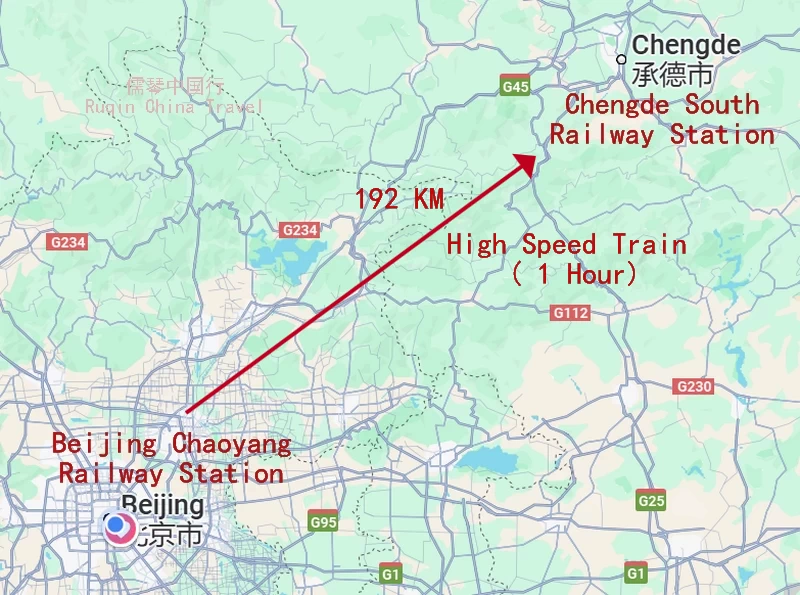
This DIY day trip is perfect for those who love self-guided adventures. Enjoy the flexibility of an independent itinerary as you explore Chengde’s top attractions from Beijing by High-speed train.
1. How to Get to Beijing Chaoyang Railway Station
If you’re planning a high-speed train trip from Beijing to Chengde, your best option is to depart from Beijing Chaoyang Railway Station (北京朝阳火车站), the hub for the most high-speed trains to Chengde South Station. It’s the busiest station for this route, ensuring frequent and convenient departures throughout the day.
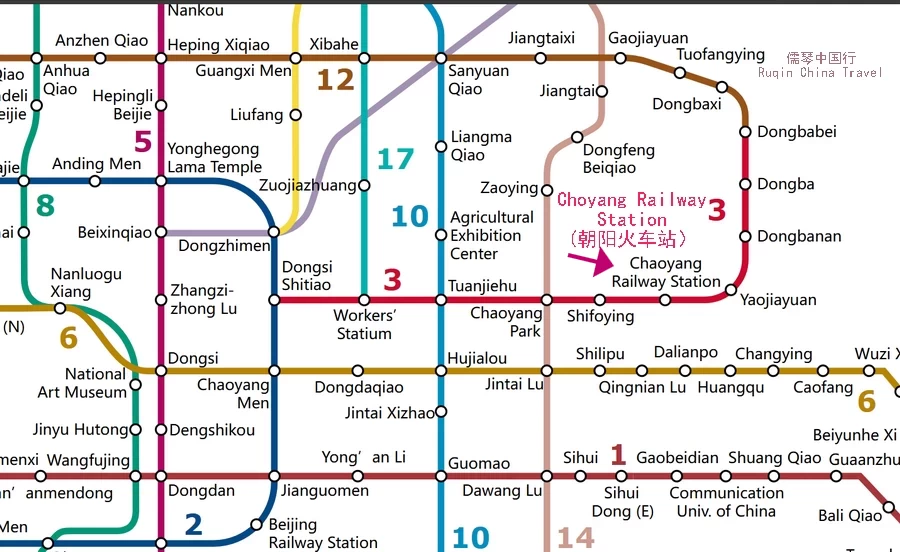
Getting there is a breeze. Simply hop onto Beijing Subway Line 3, which takes you directly to Chaoyang Station. If you’re coming from other parts of the city, you can easily transfer to Line 3 from Line 2, 10, 12, 14, and 17. The transfer is quick and straightforward, making your journey smooth and stress-free.
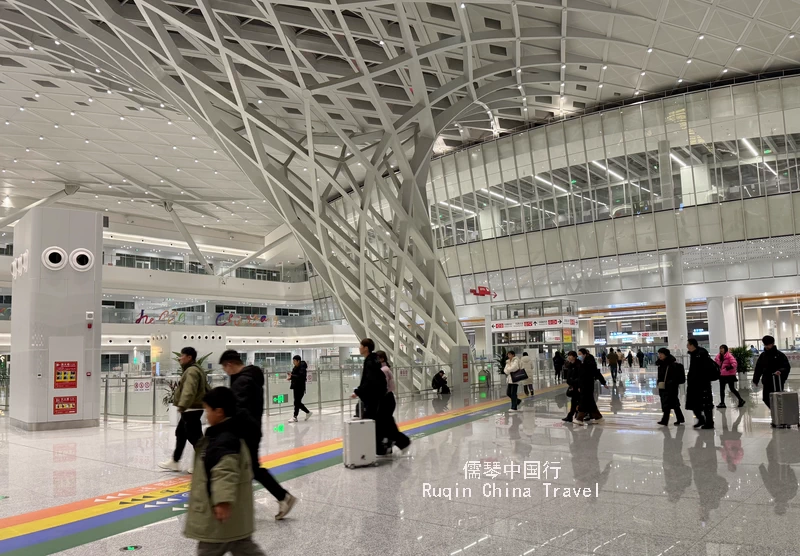
Beijing Chaoyang Station is not only a key transit hub but also the starting and ending point of the Beijing-Shenyang High-Speed Railway. The station’s sleek design spans three floors—two above ground and one below. Some sections even feature mezzanine levels, adding to its architectural charm.
Whether you’re a first-time traveler or a seasoned explorer, the ease of getting to Chaoyang Railway Station by subway makes your trip to Chengde even more enjoyable.
2. Essential Train Schedules for Your Beijing to Chengde Day Trip
The distance between Beijing Chaoyang Station and Chengde South Station (承德南站) is 192 kilometers. The high-speed train covers this in about 1 hour. Around 60 trains run daily between Beijing and Chengde, making a day trip easy and convenient.
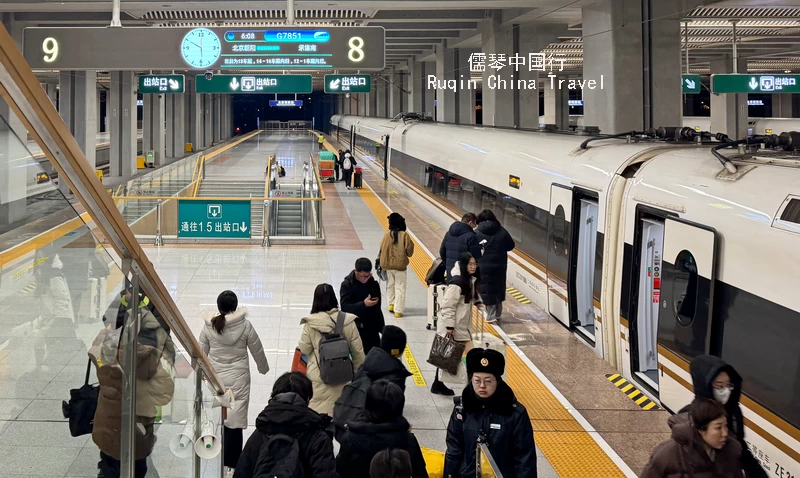
For the best experience, take an early morning train from Beijing. Return on the evening train from Chengde. This gives you plenty of time to explore Chengde at your own pace. Below, you’ll find key morning and evening train options to help you plan your trip.
Here is the morning train timetable for the Beijing Chaoyang Railway Station to Chengde South Station:
| Route | Train No. | Departure Time | Arrival Time |
|---|---|---|---|
| Beijing → Chengde | G7851 | 06:08 | 07:07 |
| Beijing → Chengde | G941 | 06:40 | 07:47 |
| Beijing → Chengde | G3663 | 07:05 | 08:04 |
| Beijing → Chengde | G959 | 7:45 | 8:37 |
Here is the evening train timetable for the Chengde South Railway Station to Beijing Chaoyang Railway Station:
| Route | Train | Departure Time | Arrival Time |
|---|---|---|---|
| Chengde → Beijing | G3674 | 17:17 | 18:15 |
| Chengde → Beijing | G3694 | 18:06 | 19:42 |
| Chengde → Beijing | G968 | 19:05 | 20:03 |
| Chengde → Beijing | G786004 | 20:03 | 20:55 |
There are plenty of high-speed trains in both the morning and evening. The schedules I’ve shared above are just for reference, so make sure to check the official timetable for the exact times.

You can adjust your train tickets based on your plans in Chengde. Booking is simple—just head to the official 12306.cn website or use trip.com.
I recommend booking in advance, especially if you’re traveling during peak seasons or holidays. This way, you’ll have one less thing to worry about while planning your trip!
3. Getting Around Chengde South Railway Station
Chengde South Railway Station is about 14 kilometers from the city center. The transportation options are very convenient.
As you exit the station, you’ll find a bus parking area to your left. Here, you can catch double-decker buses that go directly to the Mountain Resort (避暑山庄)and the Little Potala Palace (小布达拉宫). There’s also the “Tourism 1” (游1)tourist bus for sightseeing for the same route.
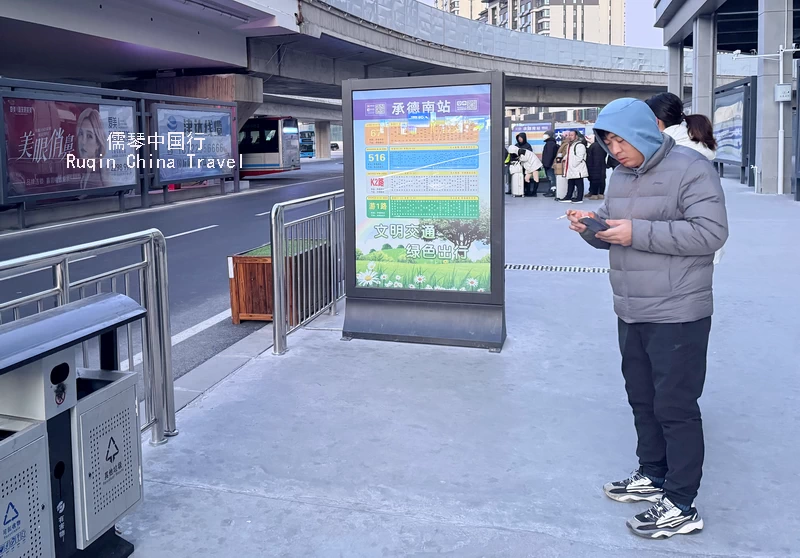
If you’d rather take a taxi, head to the underground level, where you’ll find a taxi stand. You’ll also find a private car pickup area on this level for added convenience.
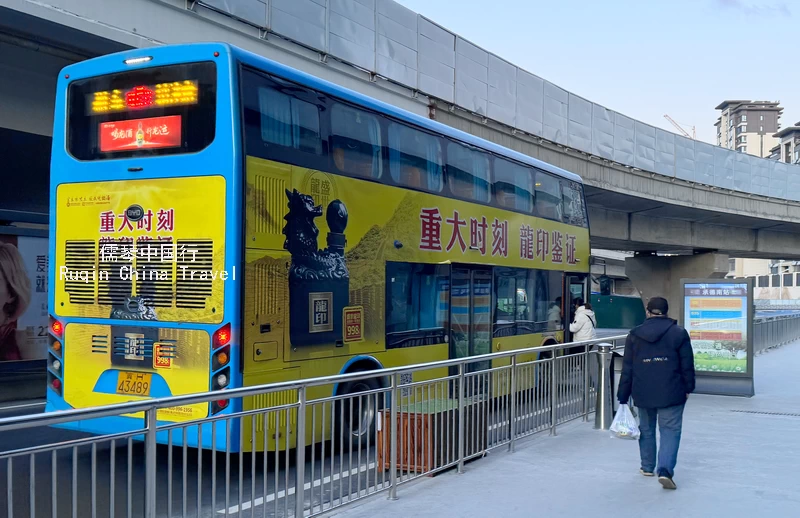
When using public transport, simply scan the QR code to board. To make it easier, download the Alipay app ahead of time. In the app, go to the “Travel” section and select “Public Transport.” A QR code will appear. Just scan it when you board the bus.
For taxis, payments are easy. You can use WeChat Pay or pay with cash. It’s simple and convenient, making getting around Chengde stress-free!
Overall, getting around Chengde from the railway station is a breeze!
4. My Suggested Chengde DIY Day Trip Route
1) Double-Decker Bus to Putuo Zongcheng Temple (Little Potala Palace)
I catch the first high-speed train from Beijing to Chengde, arriving at Chengde South Railway Station at 7:07 AM. Following the signs, I walk to the bus terminal on the left side of the station. Here, I find two public bus lines: the Double-Decker Bus and Tourism Bus 1. Both head to major attractions, including the Chengde Mountain Resort and Putuo Zongcheng Temple (often called the Little Potala Palace).
Here is the travel route map for my self-guided one-day tour of Chengde:
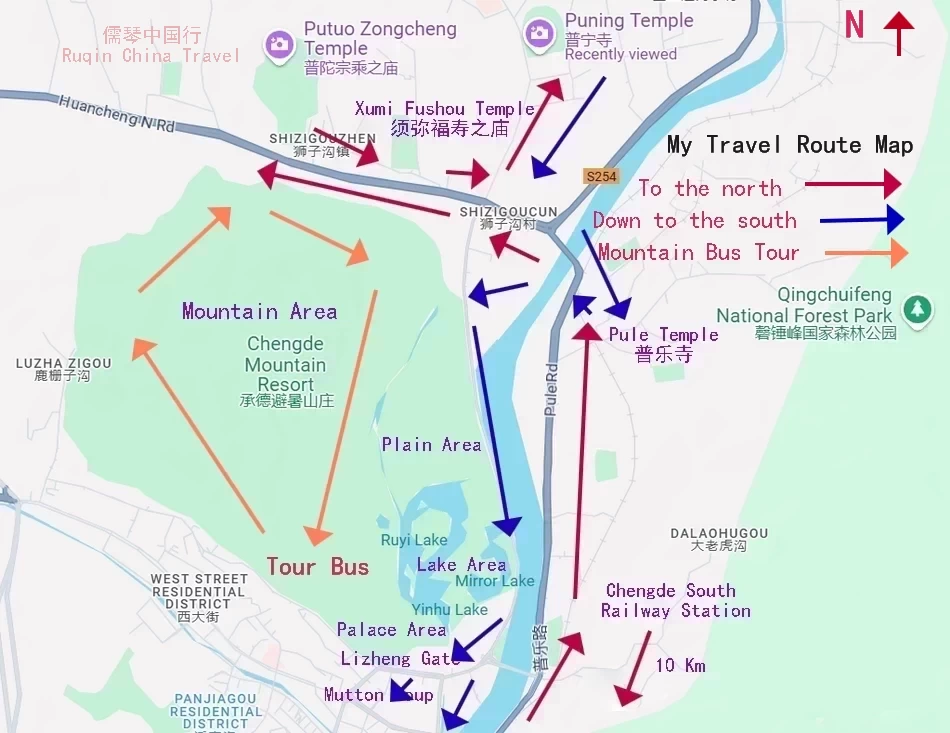
I board the first double-decker bus of the day and scan my QR code with the Alipay app. I head to the second deck for the best views of the city. The bus ride to my destination, Putuo Zongcheng Temple, takes about 50 minutes. It’s the last stop on the route.
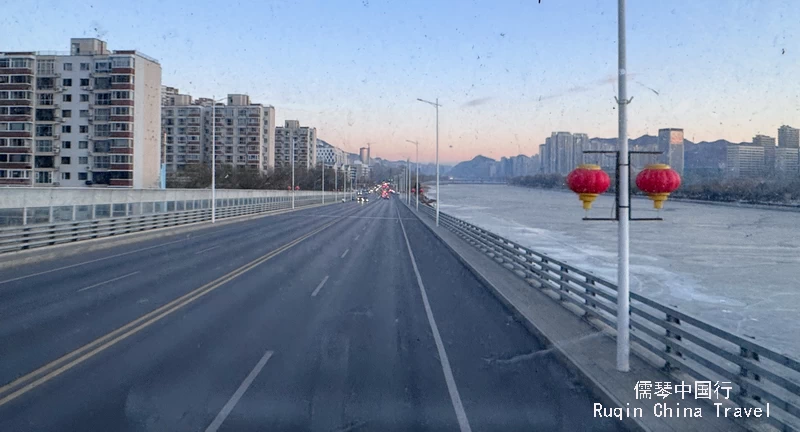
One of the perks of taking the bus is the chance to get familiar with Chengde. As I ride, I enjoy a mix of city and natural landscapes. In January, much of the Wulie River is frozen, stretching alongside the Wulie Road. The frozen surface even becomes a skating rink for some locals. I pass by the mountains, rivers, and residential areas, soaking in the unique winter scenery.
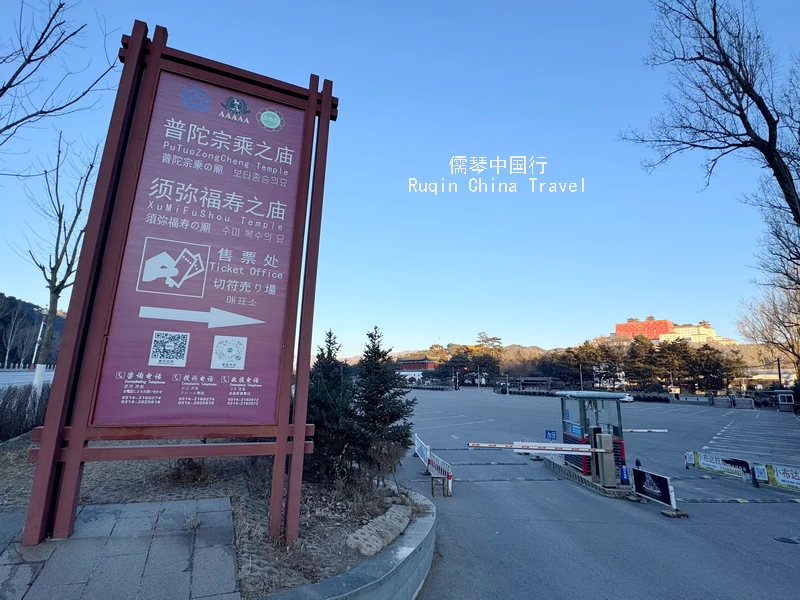
Finally, I arrive at Putuo Zongcheng Temple, my first destination of the day.
2) Exploring Putuo Zongcheng Temple (Little Potala Palace)
The Little Potala Palace in Chengde, officially known as Putuo Zongcheng Temple (普陀宗乘之庙), is a stunning Tibetan Buddhist site. Built in 1771, during the 36th year of Emperor Qianlong’s reign, it commemorates two special birthdays: the emperor’s 60th and his mother, Empress Dowager Chongqing’s 80th.
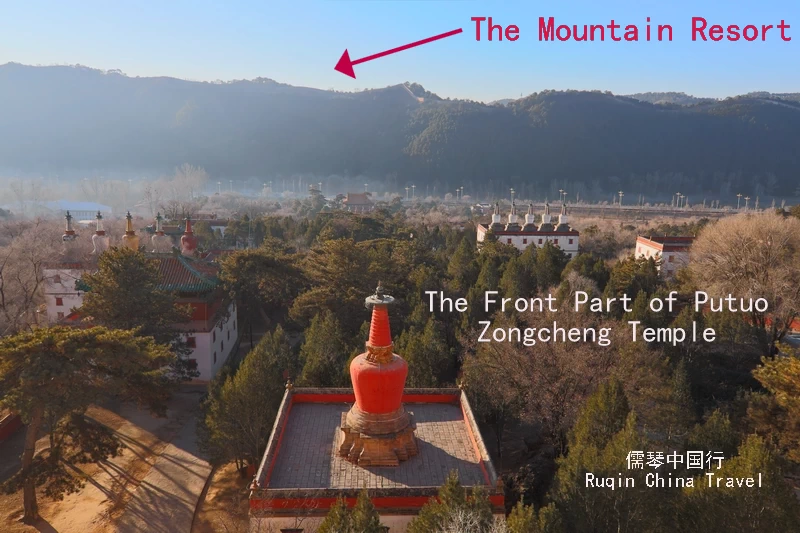
This temple was inspired by the majestic Potala Palace in Lhasa, Tibet, which is why it earned the nickname “Little Potala Palace.” The design is a remarkable blend of Tibetan architecture and imperial Chinese influences, making it one of Chengde’s most unique landmarks.
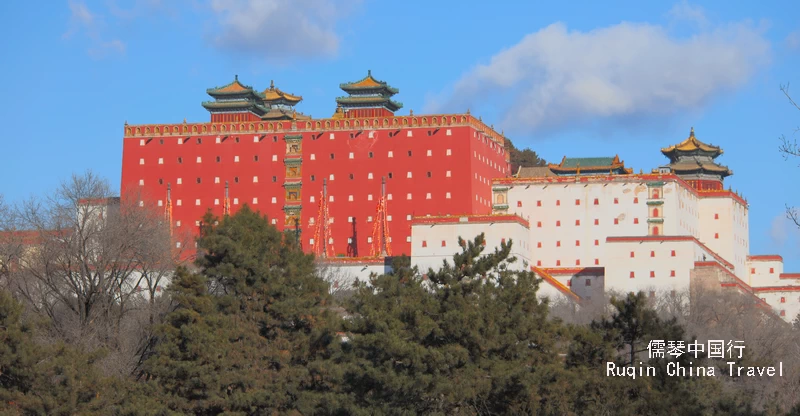
In 1961, Putuo Zongcheng Temple was designated as one of China’s first national key cultural relics. Later, in 1994, it was included in the UNESCO World Heritage List. Today, the temple draws thousands of visitors every year, becoming a must-see stop for anyone exploring Chengde’s rich cultural heritage.
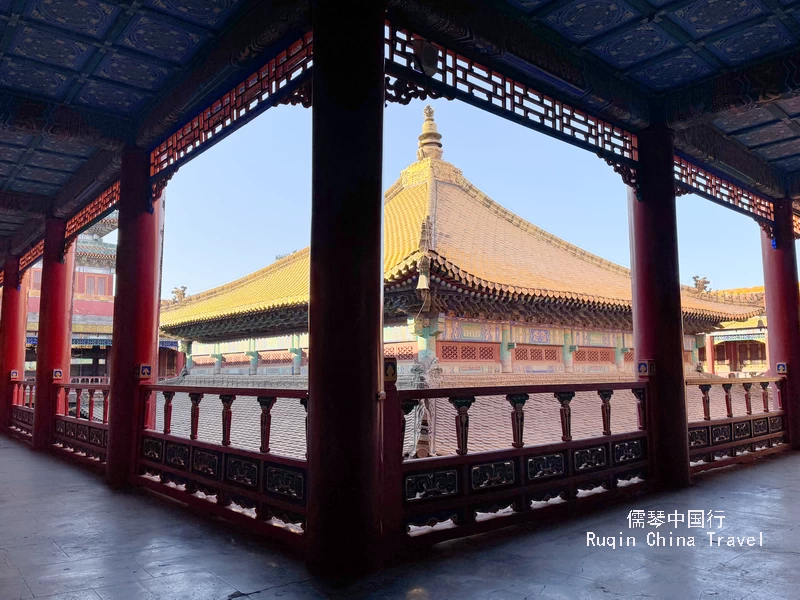
The ticket prices and opening hours for the Little Potala Palace in Chengde are as follows:
Ticket Prices:
Peak Season (April 1 to October 31): Full price 80 RMB/person, half price 40 RMB/person.
Off-season (November 1 to March 31): Full price 60 RMB/person, half price 30 RMB/person.
Opening Hours:
Peak Season: Daily from 8:00 AM to 5:30 PM, with the last entry at 4:40 PM.
Off-season: Daily from 8:30 AM to 5:00 PM, with the last entry at 4:00 PM.
Note:
1) Tickets can be purchased on-site. However, it is recommended to book in advance during the peak season.
2) People over 60 are entitled to a 50% discount, and those over 70 can enter free of charge.
3) It takes about two hours to visit the Putuo Zongcheng Temple (Little Potala Palace)
3) Exploring Xumi Fushou Temple
After exploring the Putuo Zongcheng Temple (Little Potala Palace), I take a short ten-minute walk to the nearby Xumi Fushou Temple.
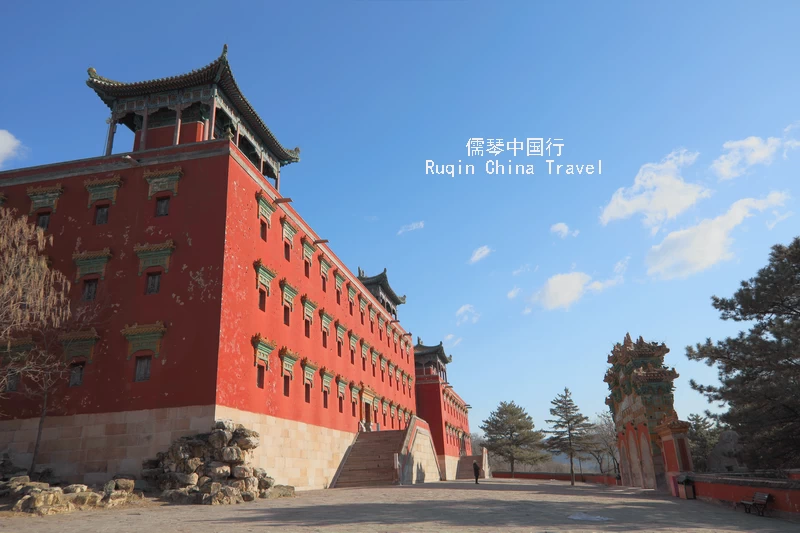
Also known as the “Palace of the Panchen Lama,” Xumi Fushou Temple (须弥福寿之庙) was built during the Qing Dynasty, under Emperor Qianlong’s reign. It was designed to honor the 6th Panchen Lama, who came from Tibet to celebrate the emperor’s 70th birthday. The temple mimics the Panchen Lama’s residence, Tashilhunpo Monastery, in Tibet. Completed in 1780, it’s the last of the eight outer temples built during this period.
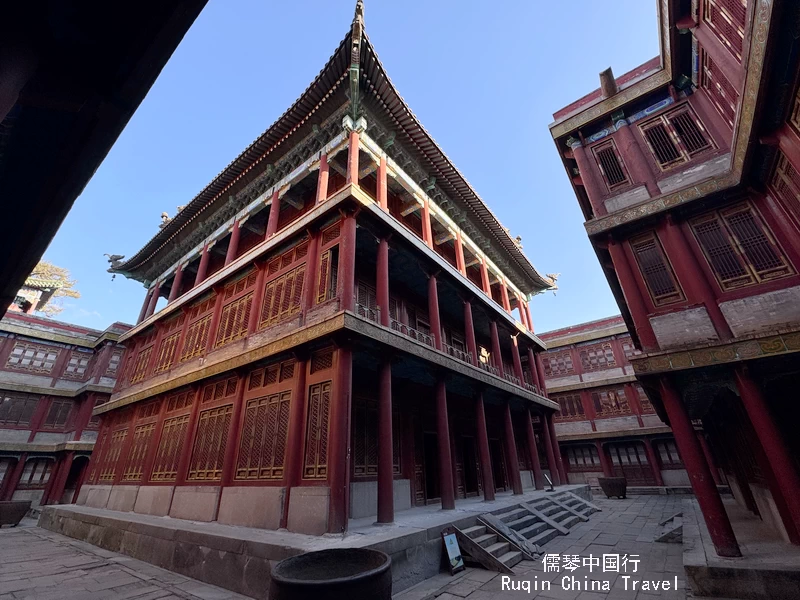
Xumi Fushou Temple blends two architectural styles. The front follows traditional Han design, while the rear embraces Tibetan influences. The temple’s centerpiece is the impressive “Grand Red Platform,” crowned by the golden-roofed Miao Gao Zhuang Yan Hall (Hall of High Solemn).
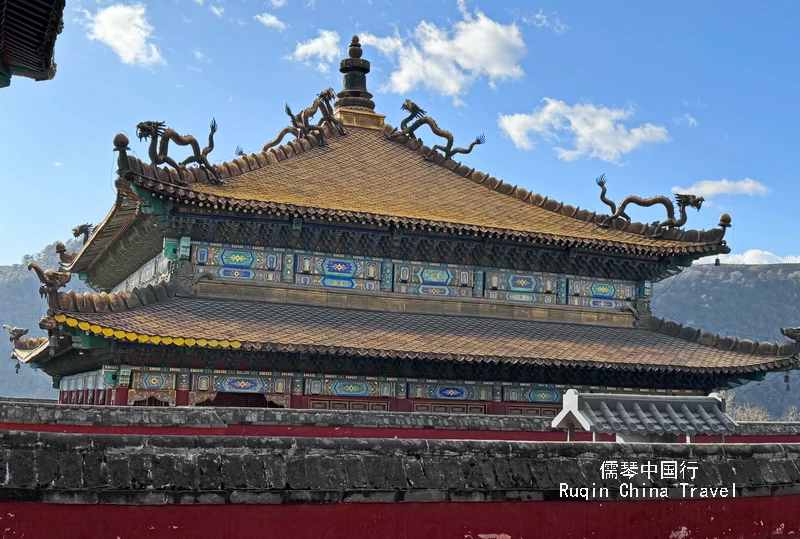
Inside the Grand Red Platform, the hall stands three stories tall. Its double-eaved roof and pointed golden top seem to hover above. Golden dragons guard the ridges—one looking up, the other down—clutching the roof with their claws, adding a fierce elegance to the structure.
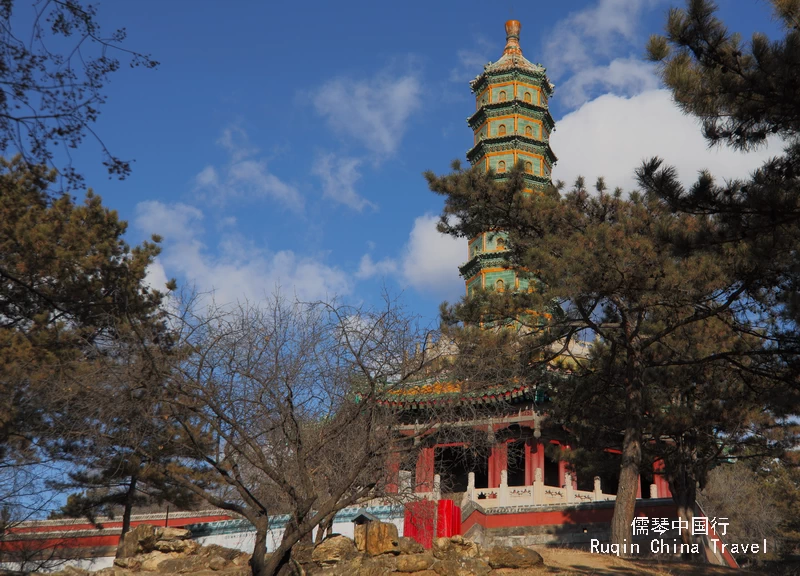
Beyond its stunning architecture, Xumi Fushou Temple holds deep cultural and political significance. It’s not just a remarkable example of Qing-era garden design but also a fusion of Tibetan and Han Chinese cultures. The temple stands as a testament to the rich history and artistic achievements of the time.
Note: Xumi Fushou Temple tickets are bundled with the Little Potala Palace tickets. If you’ve already bought the Little Potala Palace ticket, there’s no need to buy a separate ticket for Xumi Fushou Temple.
4) Visiting Puning Temple
After exploring Xumi Fushou Temple, I take a pleasant 30-minute walk to Puning Temple (普宁寺).
Puning Temple is the only place in Chengde where visitors can burn incense and pray, making it a unique spiritual stop.
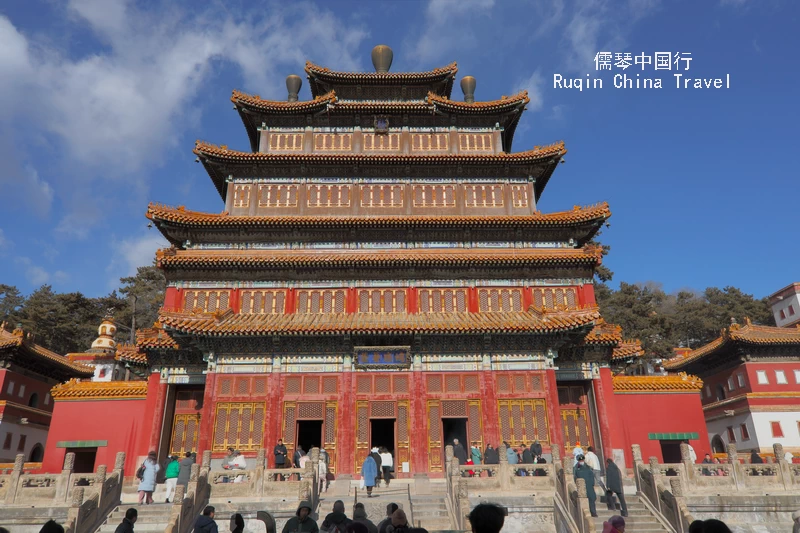
Built during the Qing Dynasty’s Qianlong period, Puning Temple blends Han and Tibetan architectural styles. The front follows traditional Han design, while the back mirrors the Tibetan Sakyamuni Temple. The seamless fusion of these styles is truly remarkable.
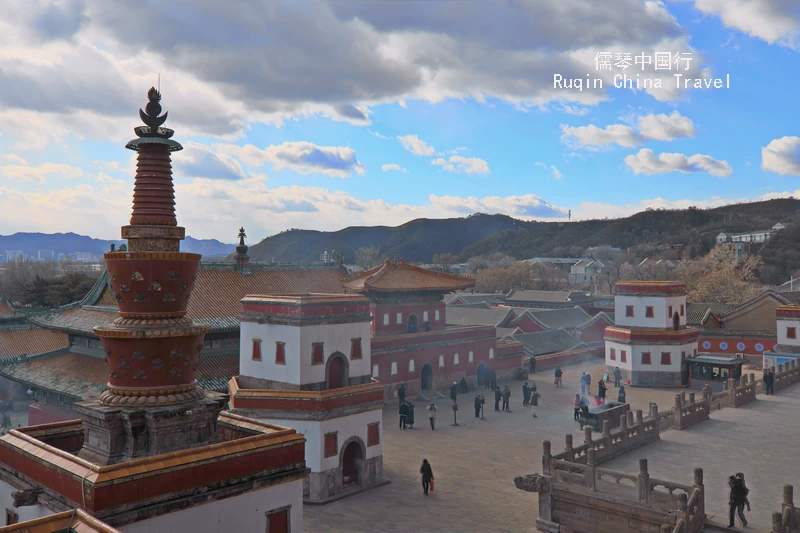
The highlight is the massive Avalokiteshvara statue, with 1,000 hands and 1,000 eyes. Standing at 27.21 meters tall, this golden-coated wooden sculpture holds a Guinness World Record and is awe-inspiring to behold.
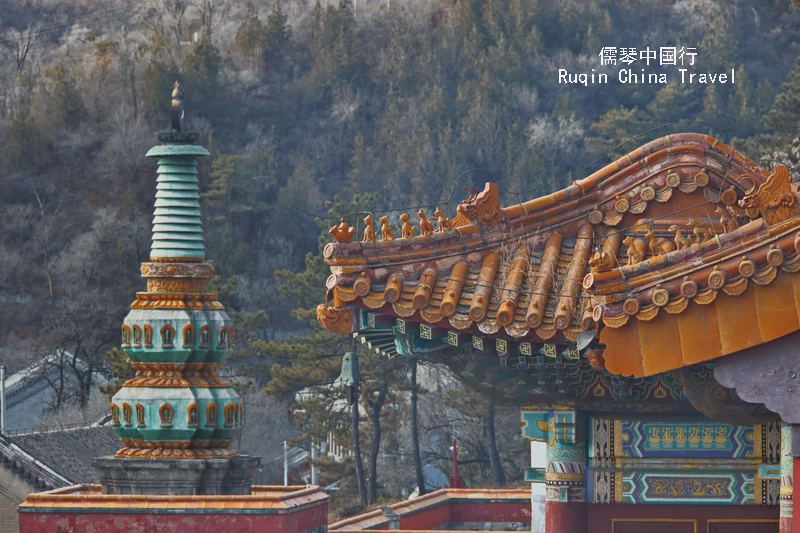
The temple is divided into two parts. The front includes the Mountain Gate, Bell Tower, Drum Tower, Hall of Heavenly Kings, and the Main Hall of Great Hero. The rear follows a mandala layout with the Mahayana Pavilion at the center, symbolizing Mount Meru. Four Lama Pagodas represent the four wisdoms, while four smaller temples represent the four continents of Vajrayana Buddhism.
Puning Temple is not only a pilgrimage site but also an important center for studying Buddhist culture. Inside, you’ll find a wealth of scriptures and artifacts, reflecting its rich spiritual heritage.
Ticket Prices:
Peak Season: ¥80 (includes entry to Puyou Temple)
Off-Season: ¥60 (includes entry to Puyou Temple)
How to Buy Tickets
You can purchase Puning Temple tickets online or offline. For online purchases, simply book through major travel platforms. For in-person tickets, visit the ticket counter at the temple.
Opening Hours
Puning Temple is open daily from 8:00 AM to 5:30 PM. During peak season (April 1st to October 31st), the temple stays open until 6:00 PM.
5) Visiting Pule Temple
After exploring Puning Temple (普宁寺), I’m a bit tired, so I take a 15 yuan taxi to Pule Temple (普乐寺)before lunch.
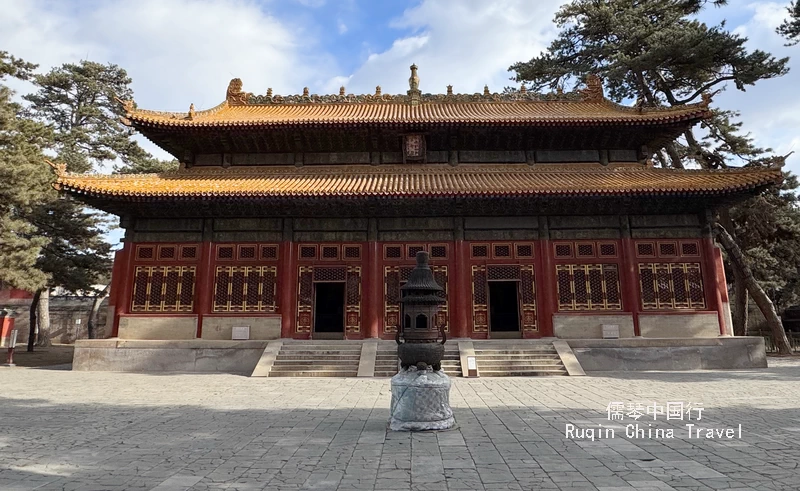
Pule Temple, also known as “The Round Pavilion,” is located in the northeast of Chengde, near the Summer Mountain Resort. It was built in 1766 during the Qing Dynasty by Emperor Qianlong to symbolize national unity. The name “Pule” means “universal joy,” inspired by a quote from Fan Zhongyan’s Yueyang Lou Ji: “Worry before the people, enjoy after the people.”
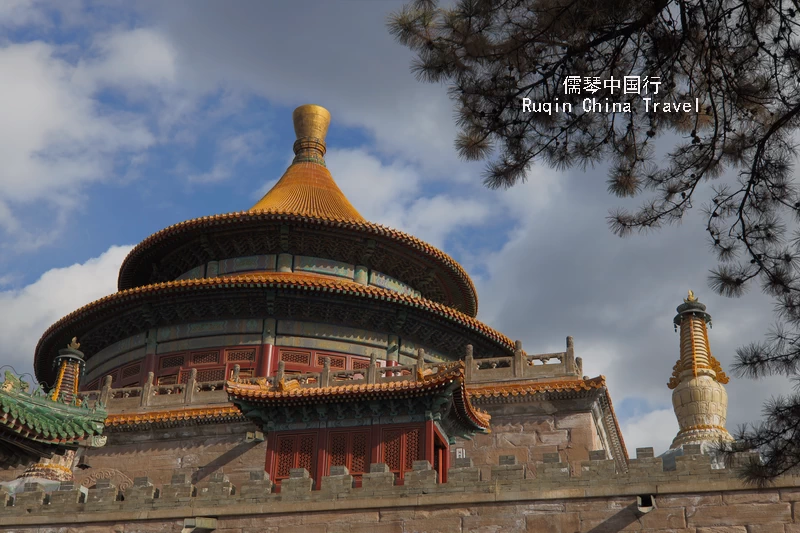
The temple blends Han and Tibetan architectural styles. The front half follows traditional Han design with a mountain gate, Hall of Heavenly Kings, Bell and Drum Tower, and the main hall. The back half is Tibetan-style, with the central building, Xuguang Pavilion, featuring a multi-eaved, round dome. Inside, a finely carved dragon and phoenix ceiling adds artistic value.
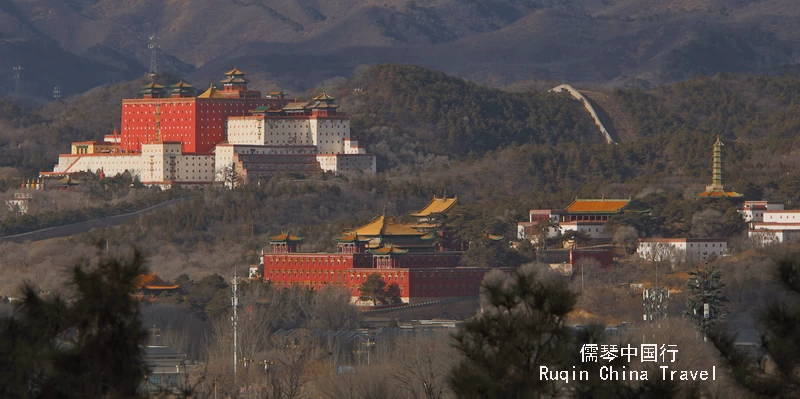
Pule Temple is not only a place of worship but also a remarkable example of Han-Tibetan architectural fusion.
Ticket Prices
Adult: ¥30
Discounted (for children, seniors, and students): ¥15
Opening Hours
October 10th to March 31st: 8:30 AM – 5:30 PM
April 1st to April 30th: 8:00 AM – 5:30 PM
May 1st to October 9th: 7:00 AM – 6:00 PM
6)Local Flavor Lunch
By the time I leave Pule Temple, it’s already 1:00 PM, and I’m starving. Since it’s the off-season, there are no taxis waiting at the parking lot. I use the Gaode taxi app, and within minutes, a local taxi arrives. I ask the driver to take me to the main entrance of Chengde Mountain Resort (避暑山庄)– the Lizheng Gate 丽正门 (Taxi fare:15 yuan).
Once I arrive, I cross the street to Xinglong Street (兴隆街), where several restaurants are lined up. It doesn’t take long to spot a restaurant specializing in mutton soup, a local specialty in Chengde. The place is called “Liu Ji Mutton Soup,”(六记羊汤) with a sign proudly stating: “Intangible Cultural Heritage, Authentic Pingquan Mutton Soup, and Shāobǐng (flatbread).”
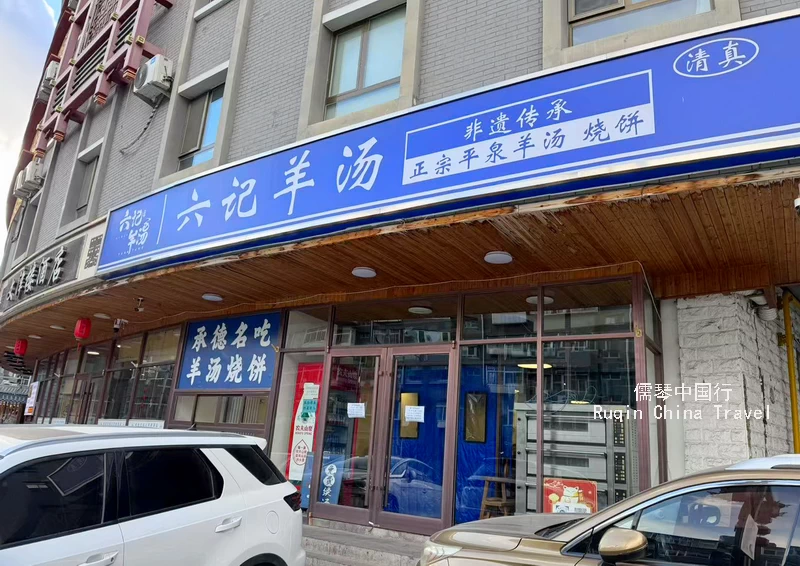
I step inside, and there are only a few diners, maybe because of the off-season or because it’s just past the lunch rush. I order a piece of shāobǐng, a bowl of mutton soup, and a plate of sliced beef. The weather is freezing—at night, it drops to -14°C, and it’s -4°C during the day.
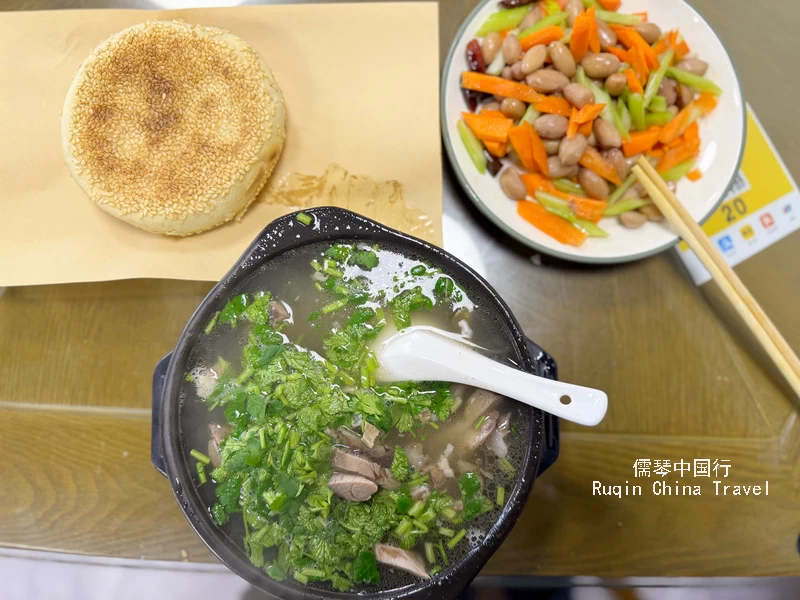
The shāobǐng smells wonderful, and the mutton soup is hearty with generous portions of meat. I quickly finish my meal, feeling satisfied and warmed. After a short rest, I’m ready to begin my tour of the Summer Resort.
7) Touring Chengde Mountain Resort
After finishing my mutton soup, I leave the restaurant and head to the Lizheng Gate of the Mountain Resort across the street. I’ve visited the Mountain Resort many times before, but this time, I plan to take the resort’s bus around the northwest mountain area. From there, I can get a panoramic view of the Putuo Zongcheng Temple, Xumi Fushou Temple, Bangchui Mountain, and the entire resort. The scenery may not be as beautiful as in spring or autumn, but the winter still offers a peaceful charm, with the lake frozen and fewer tourists.
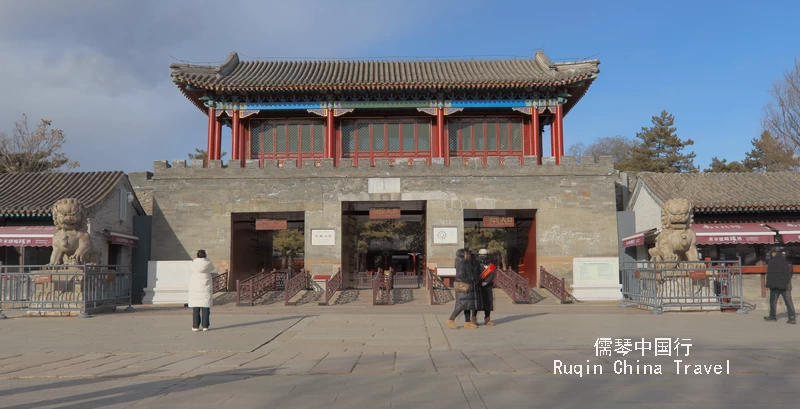
The Mountain Resort was first built in 1703 during the Kangxi reign and completed in 1792 after 89 years of construction. It’s divided into two main areas: the Palace Area and the Garden Area, which includes the lakes, plains, and mountains. The layout of the resort reflects China’s geographic landscape, with the northwest mountainous area, the southeast lake area, and the northern plain area forming a miniature version of China.
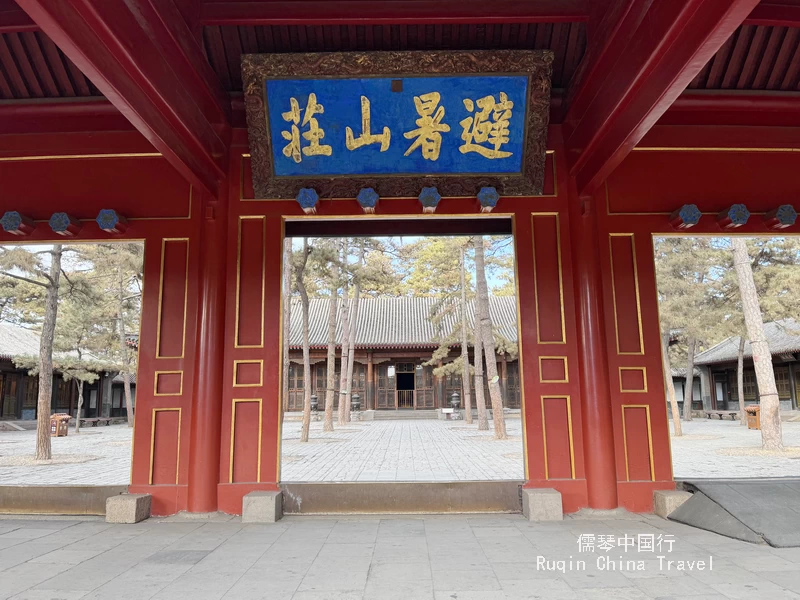
The garden design follows the principles of nature, with over 120 buildings hidden amidst the mountains, water, and greenery. It creates a grand scene that blends southern elegance with northern majesty. Outside the resort’s palace walls are twelve royal temples, including the Putuo Zongcheng Temple, Xumi Fushou Temple, and Puning Temple.
Palace Area
Located in the southern part of the resort, the Palace Area covers 102,000 square meters. It includes several buildings laid out in a strict pattern, resembling a smaller version of the Forbidden City.
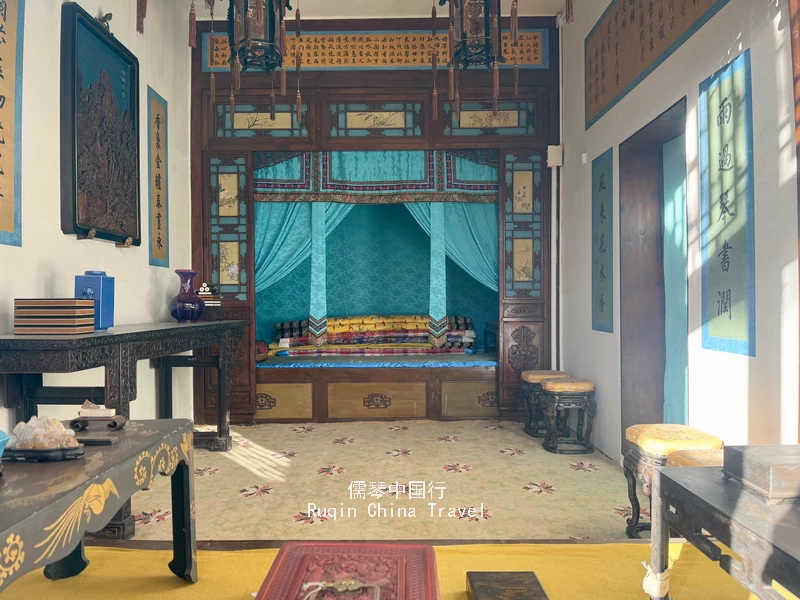
Key buildings include the main palace, Songhe Zhai, Wanhe Songfeng, and Donggong, with the main palace area containing nine courtyards, divided into the “Outer Court” and “Inner Residence.”
Lake Area
The heart of the resort lies in the Lake Area, praised by Emperor Kangxi for its natural beauty, claiming it surpassed the West Lake.
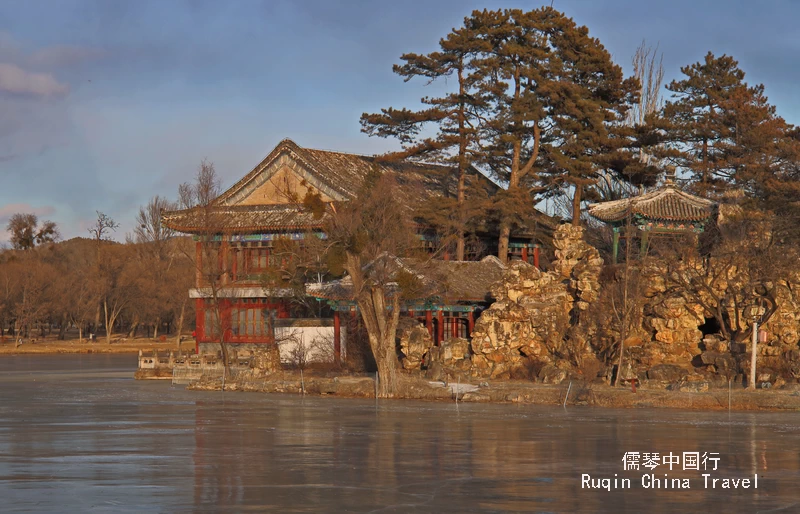
The lake is divided into five smaller lakes by islands and embankments, connected by bridges. Surrounded by lush trees and scenic buildings, the area feels winding and picturesque.
Plain Area
The Plain Area lies to the north of the resort and east of the lake. Spanning 607,000 square meters, this area features grasslands and forests.
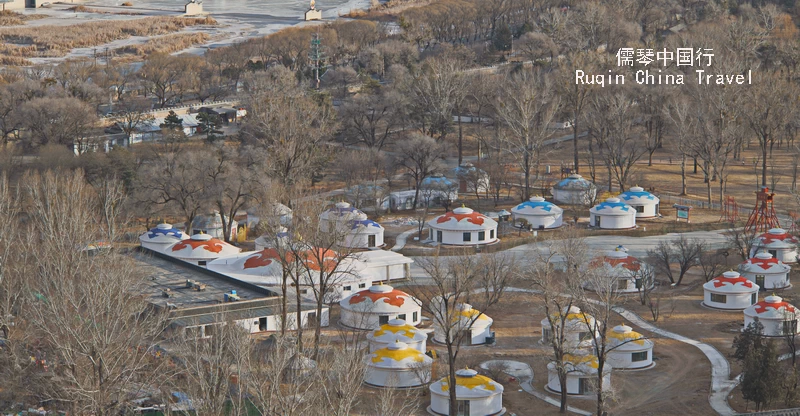
The western part is a prairie, where the emperor used to hold horse racing events.
Mountain Area
The Mountain Area, located in the northwest, covers 4.435 million square meters and makes up four-fifths of the entire resort. From the high peaks in the northwest to the plains and lakes in the southeast, there’s an elevation difference of 180 meters.
The landscape here is rugged, with flowing springs and dense forests. The towering mountains act as natural barriers, blocking the cold north winds, which also help regulate the resort’s climate.
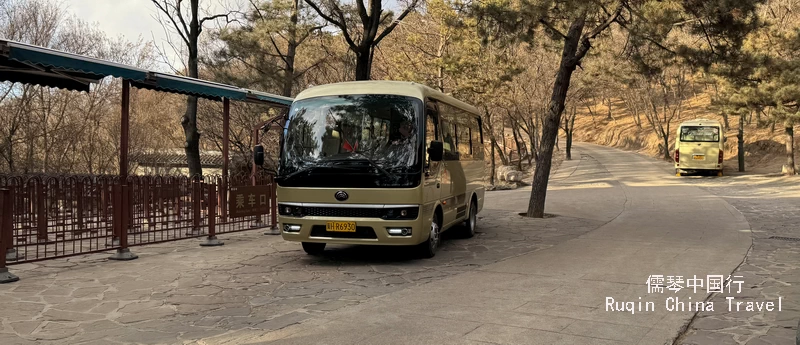
The Mountain Tour Bus is an excellent choice for exploring the Mountain Resort. It takes you directly to the top, offering a panoramic view of the entire city of Chengde. Bus Fare: 60 yuan per person.
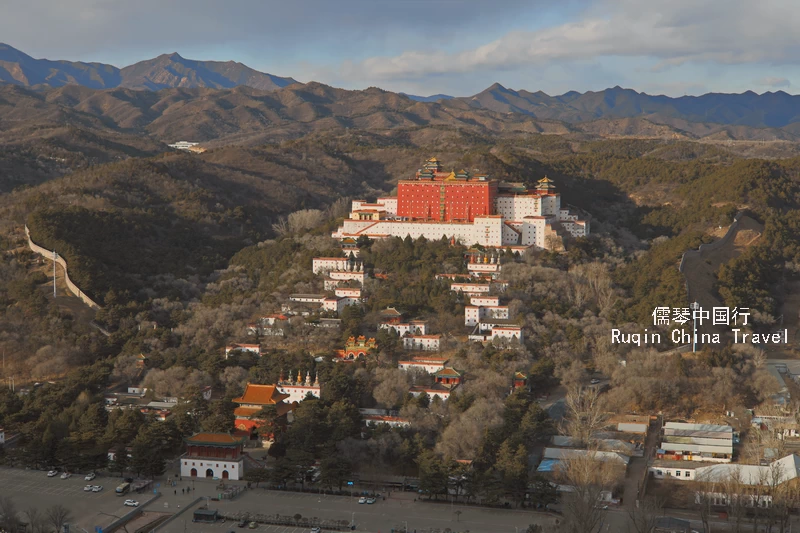
The resort’s design emphasizes natural beauty, without excessive ornamentation, offering a harmonious blend of southern grace and northern grandeur. Beyond the palace walls, the twelve royal temples add to the spiritual and architectural richness of the site.
Mountain Resort Ticket Prices and Opening Hours
| Attraction Name | Full Price (CNY) April 1 – Oct 31 | Full Price (CNY) Nov 1 – March 31 | Half Price April 1 – Oct 31 | Half Price Nov 1 – March 31 |
|---|---|---|---|---|
| Summer Resort Area (Including Museum) | 130 | 90 | 65 | 45 |
Opening Hours
| Opening Dates | Opening Hours |
|---|---|
| April 1 – April 30 | 07:30 – 17:30 |
| May 1 – October 9 | 07:00 – 18:00 |
| October 10 – March 31 | 08:00 – 17:30 |
Note:
1)Ticket sales stop 30 minutes before closing.
2) Resort Bus Tour: RMB 60 per person (The Bus Parking Area is north of the Palace Area)
3) Address: 20 Lizhengmen Road, Shuangqiao District, Chengde City
8) High-Speed Train Back to Beijing
After finishing my tour of the Summer Resort, I use the Gaode taxi app to book a ride to Chengde South Station. The fare is 30 yuan. I arrive at the station at 5:00 PM. My original train was scheduled for 7:00 PM, but I head to the ticket center to change it. I manage to catch the next train, which departs at 5:17 PM, heading to Beijing.
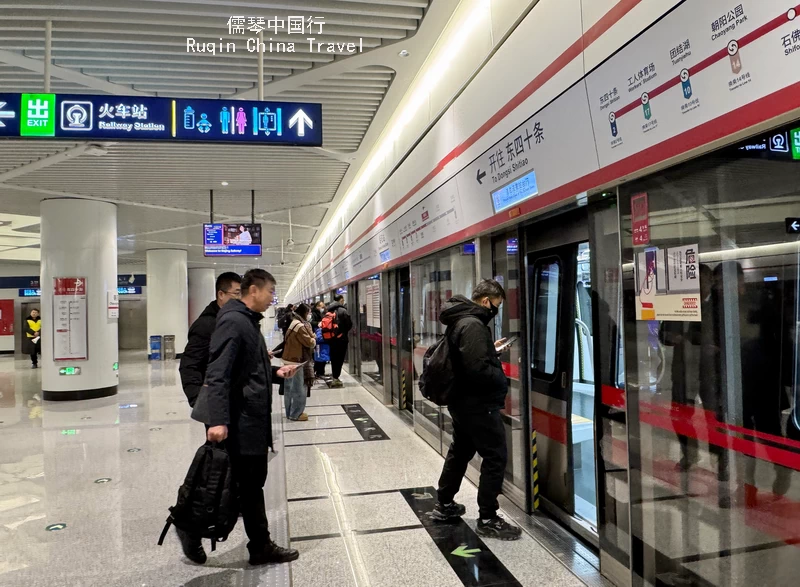
I arrive at Beijing Chaoyang Railway Station at 6:15 PM. After getting off the train, I follow the signs and quickly find the entrance to Metro Line 3. I transfer to Line 10, and finally, I’m home. A smooth and perfect end to the day.
9)Accommodation in Chengde
If you plan to stay overnight in Chengde, I recommend staying at the Chengde Mountain Villa Hotel (山庄宾馆), located just across from the Lizheng Gate of the Summer Resort.
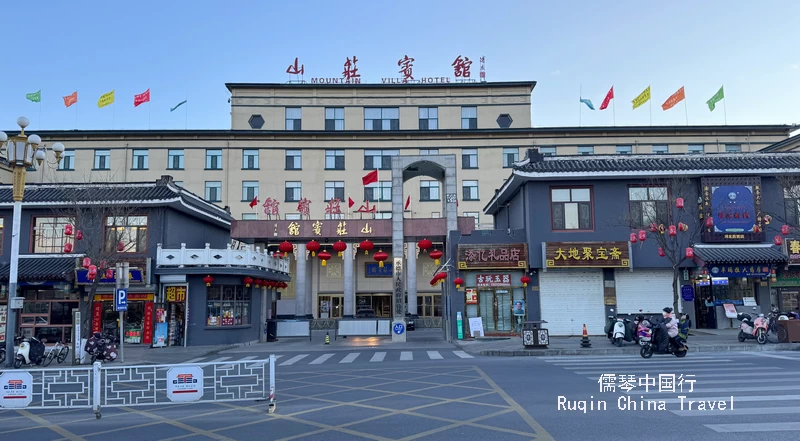
The Chengde Mountain Villa Hotel is situated at 11 Lizhengmen Street, Chengde City, Hebei Province. Built in the early 1970s, it was originally the tourism reception center for the Chengde regional government. In 1993, it was renamed and is now a state-owned, three-star hotel.
Facilities and Services
The hotel offers 192 standard rooms, 8 deluxe suites, 146 regular rooms, and a selection of budget options, with a total of 886 beds. The hotel has a long history and boasts unique, elegant design and luxurious décor. The lobby features a plaque written by Pujie, the brother of the last emperor Puyi, adding a touch of royal prestige.
The hotel’s Zhuangzhongyuan Restaurant serves a variety of local Chengde specialties, such as the Summer Resort’s mutton soup, the halal Eight Great Bowls, mushroom feasts, and imperial-style dishes. The flavors are delicious, offering guests a truly indulgent culinary experience.
🚄 Private Day Trip to Chengde from Beijing by Bullet Train
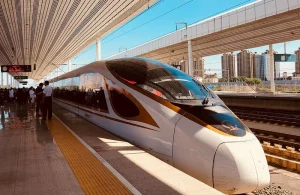
Need a quick escape from the hustle of Beijing? Hop on a 59-minute bullet train and explore the peaceful city of Chengde, home to some of China’s most regal and under-the-radar UNESCO gems. With your own private guide, you’ll uncover the grandeur of the Mountain Resort Summer Palace and the stunning mini version of Tibet’s Potala Palace, all in a relaxed one-day journey.
This all-inclusive tour covers everything—first-class train tickets, entrance fees, a local guide, and door-to-door hotel transfers. Easy, seamless, and unforgettable. 🏯🍃
👉 Book Your Private Chengde Day Trip from Beijing Now
🗺️ Why You’ll Love It
- 🚄 Ride First-Class on China’s ultra-modern high-speed train—only 59 minutes each way
- 👨🏫 Enjoy a Private Tour with a friendly guide who brings history to life
- 🌳 Visit Two UNESCO Sites: the Mountain Resort Summer Palace & Little Potala Palace
- 🚗 Hotel Pickup & Drop-Off Included for total peace of mind
- 🧘♀️ Perfect Day Trip for those who want culture without crowds
Beijing to Chengde High-Speed Train Day Trip is an unforgettable experience, offering a perfect mix of history, culture, and natural beauty—all just a high-speed train ride away. Whether you’re exploring the grandeur of the Mountain Resort, savoring local delicacies, or soaking in the serene winter landscapes, this quick getaway provides a refreshing break from the city.
With our Beijing to Chengde High-Speed Train Day Trip DIY guide, you can easily navigate Chengde’s top attractions, ensuring a smooth, hassle-free adventure. So, hop on the high-speed train, and let Chengde’s charm unfold before you!
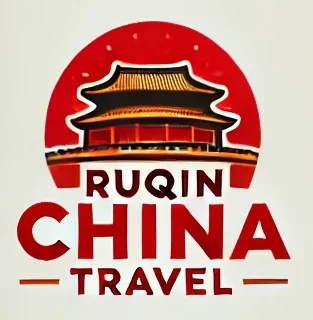
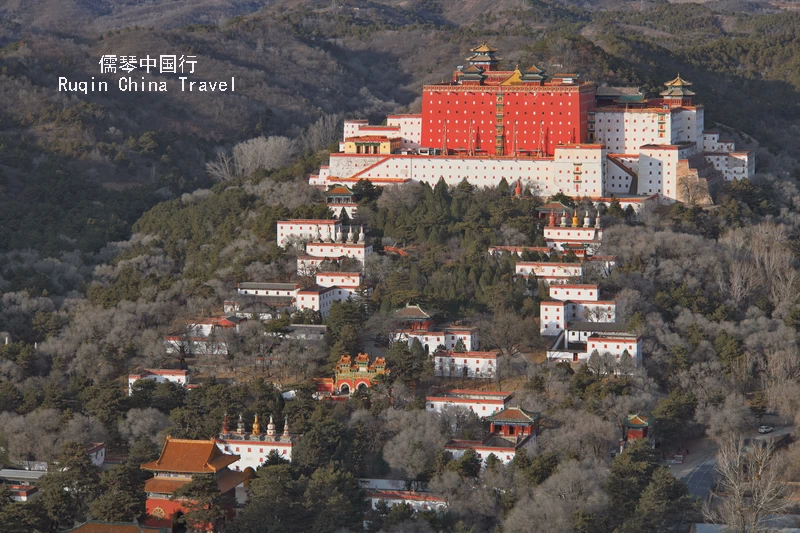
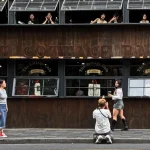
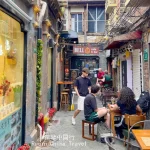
Hey, i did this tour today and it was amazing!!!
Just one update: there are no doubledecker bus line anymore. Dont watch for them, just take line no. 1 – it operates between chengde south station to little Potala Palace.
Happy Travels 🫰
Dear Katja,
Thanks for your feedback! Much appreciated!
Daniel
Ruqin China Travel